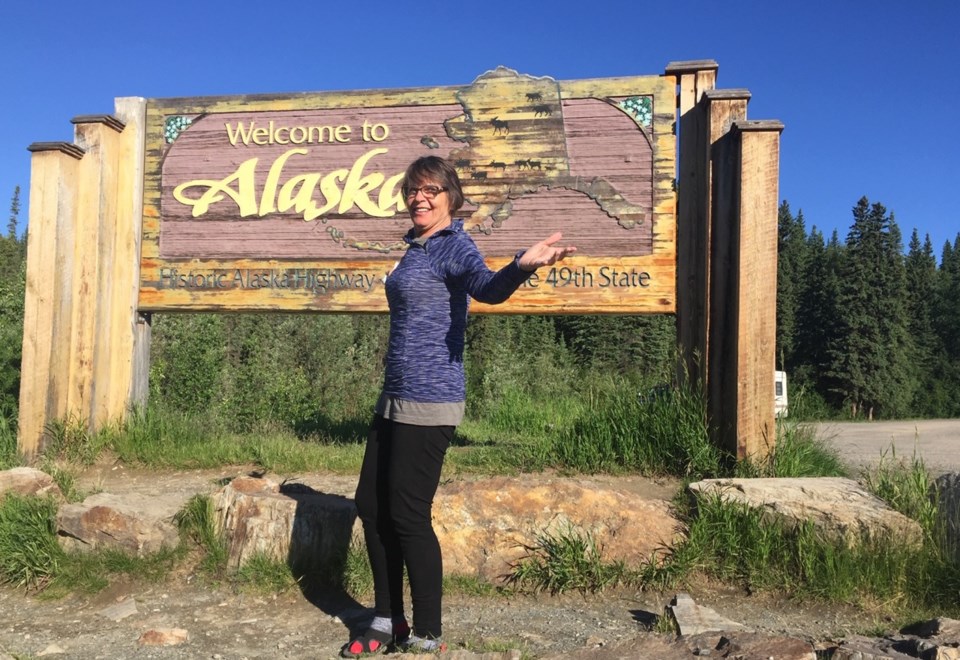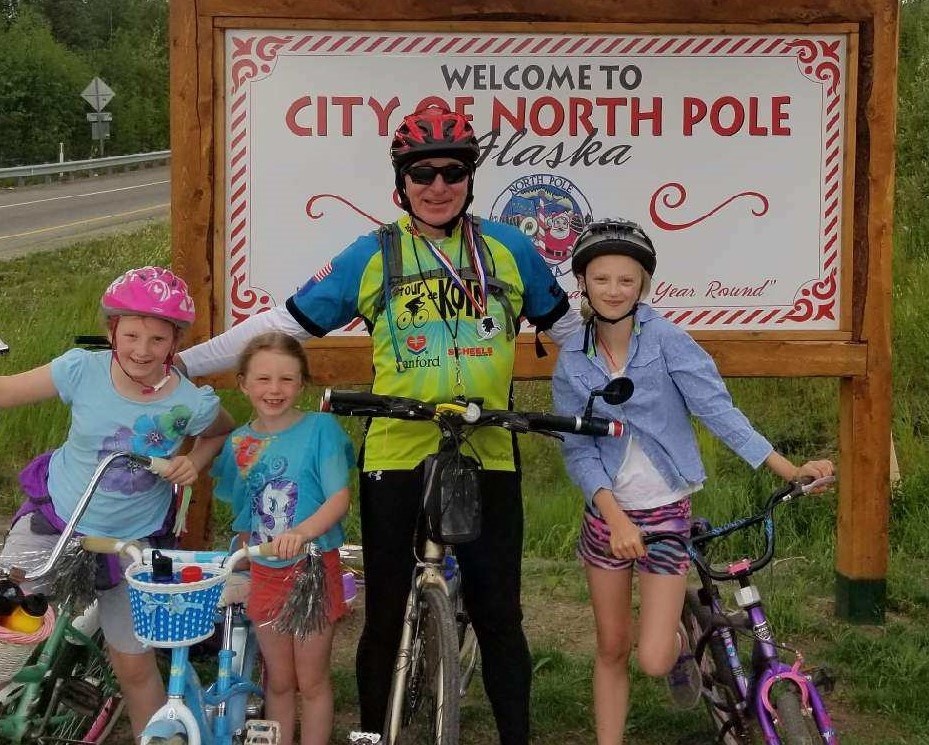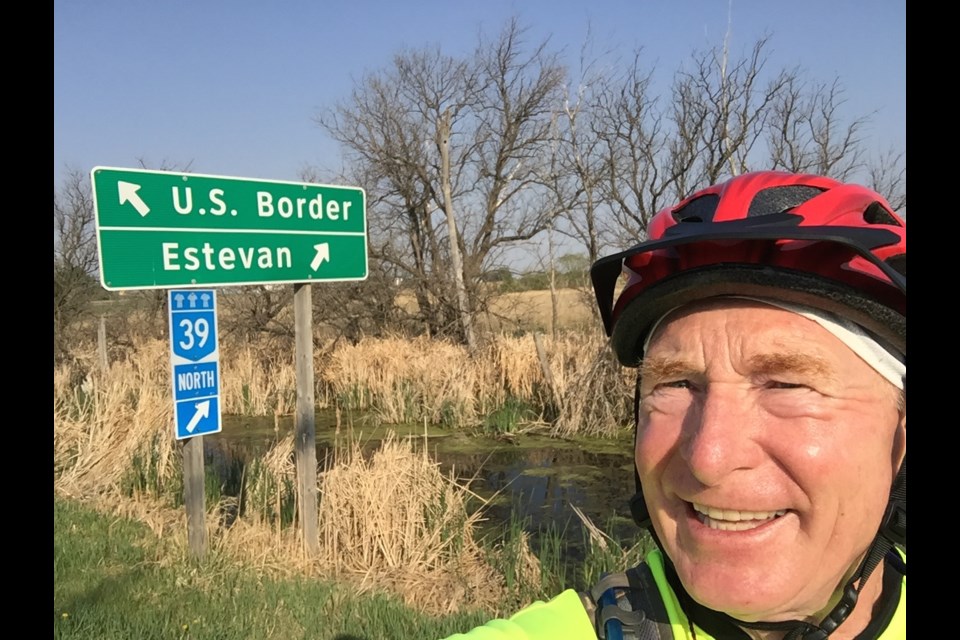Destination North Pole. It sounds impressive and inspiring. And that's how Gary Wietgrefe named his book, which he wrote after covering 5,000 kilometres by bicycle, travelling from Pierre, S.D., to the North Pole.
An American bicyclist, he was 65 years old when he decided that it was the time to saddle up his bike and make his long-time plan come true. On May 20, 2018, he left home, heading towards the North Pole, which is near Fairbanks, Alaska, where his nephew lives, hoping for a great adventure and planning to make it there on July 20 of that year.
The Mercury talked to Wietgrefe about the trip and his memories about bicycling through the Estevan area.
"About 10 years ago I was visiting with a guy as we were doing a bike tour, and I asked him what the most interesting bike ride was because he'd biked in several different places in several states. And he said when he biked with his brothers to Alaska," recalled Wietgrefe.
Ever since then Wietgrefe knew that reaching the North Pole was something he wanted to do. Having family there also solidified his plan, however, life was busy with work, and then, after he retired, with travelling, so it wouldn’t happen for a few years.
"We retired in 2012 and we just travelled. We biked a lot in quite a few different places in several countries, New Zealand, for example, a couple of times down there, Southern and Northern Ireland, Mexico, other places. In the wintertime, we tended to not bicycle. I haven't been on my bicycle for eight months," said Wietgrefe.
Despite not bicycling for a while, when he decided to make it to the North Pole, he was still in good shape as he and his wife Patricia have been travelling to Mexico, where Wietgrefe usually was active helping Canadians cleaning the trails and doing a lot of hiking.
When Wietgrefe decided it was the time to go, he came to Patricia.
"Luckily, my wife decided to drive and catch up with me in western Saskatchewan. After unloading my bike bags, she ventured ahead to find food and lodging."

Wietgrefe said that Patricia had a very different adventure, in which she also got to explore the beautiful landscapes and historic views, but she was doing so at her own pace.
He says the first 10 days of his trip, before he got into Saskatchewan, he had shorter days doing under 100 kilometres as it was more difficult to cycle.
Estevan was a perfect geographic place for an overnight stay after crossing the border.
Wietgrefe noted that he had a positive experience in Estevan. In his book he wrote, "Today, I had entered another country. Would I see differences? In currency, certainly. Other differences may be too subtle to distinguish, but I certainly was impressed with my first motel clerk and Canadian sixteen-year-old waitress."
This statement came out of remarks in his journal which he made after going through Estevan and which said: "service is more appreciated when you do not expect it, its simple gesture was great to Estevan to Canadian hospitality."
The endurance was built in the Prairies for the long, mountainous days in British Columbia and the Yukon.
"Actually, my longest day was 267 kilometres from Weyburn to Davidson. Those two small wheels were carrying about 130 kilos," explained Wietgrefe.
While the plains were an easier terrain, the winds were another challenge. When building the route, Wietgrefe decided he would follow the highways trying to keep it flat as far as he could, thus going north first and then angling north-west through Saskatchewan. But while he was travelling along the highways the winds sometimes would be favourable, but other days they made it more difficult to bicycle.
"I had a reservation in Regina, except for that I got up early because I missed the change in time zone, North Dakota to Saskatchewan, and I ended up in Regina by 10:30 in the morning. To me it was way too early, that's why with favourable winds I biked all the way over to Davidson."
The 5,000 kilometre trip through the Dakotas, Saskatchewan, Alberta, British Columbia, the Yukon and Alaska took Wietgrefe 121 kilometres and eight hours and three minutes per day for 40 days. He arrived at the North Pole three weeks earlier than expected.
"Every morning I got up and I just couldn't wait to see what was next," recalled Wietgrefe.

The emotions he had when he made it to the destination were hard to describe.
"I tried to describe it in the book, but I've never been able to put it into words. Was it satisfaction? Yes … When I've seen the North Pole sign on the highway at the city limits it was just… I just kind of fell apart."
When he made it to the destination, his Alaskan family was waiting for him with whistles and an official banner stating that he went through the finish line.
"It was so emotional that it's hard to explain."
Wietgrefe biked for personal satisfaction, so he had time for whatever life had for him along the way. Hundreds of inattentive drivers, mountain passes, dangerous bridges, black bears, grizzlies, wood bison, moose, and an occasional wolf provided daily challenges.
He marked the changes in nature by continental divides.
"Most people think of the continental divides as East-West, as the Rocky Mountains divide Canada, Rocky Mountains divide the U.S. But actually, when I started out I was in an area with drainage that goes to the Gulf of Mexico. When I crossed into North Dakota before I got to the Canadian border, the drainage went to eventually the Hudson Bay. When I got further up north it went to the Arctic, and once I got into Alaska, of course, it drains into the Pacific. So I went across four actual continental divides," said Wietgrefe.
Wietgrefe also tried to stop at historical markers when he needed to take a break. As he said, "I lived to write about it."
"Moving, let's say, at 20 km/h you appreciate nature much more. When you get to … a rest stop or a café you are more relaxed, you are engaged more. There is no time limit ... I had no pressure. And that's what I appreciated about Canada. The Canadians, they basically took me in," said Wietgrefe.
He recalled the situation at a gas station when he was pretty tired and a Canadian he met there while eating a sandwich invited him to have some rest at his camper for a day or two.
"These are the things that made it personal but tied into the Canadian culture of the whole trip. It was wonderful."
The blog and the journal Wietgrefe kept along the way after the end of the adventure fruited into a book, which wasn't a part of the plan in the very beginning.
But being a writer who published several other books, Wietgrefe ended up telling the story of this exciting, endearing, humorous, dangerous and sometimes quirky travel adventure in his new book Destination North Pole - 5,000 km by Bicycle. He finished the book while he and his wife isolated at a Black Hills cabin last spring. He recently took first place for amateur literary prose at the South Dakota State Fair. The book is for those wanting an armchair adventure through Canada from the Dakotas to the North Pole, Alaska.
It is available for sale through Amazon and other online retailers.



